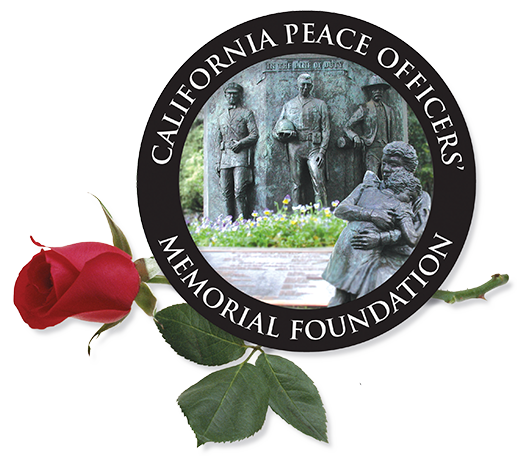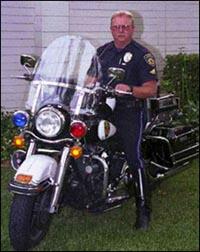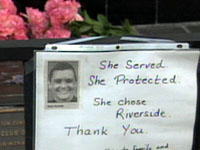Alameda Co. Sheriff’s Department Dep. John P. Monego was ambushed and killed execution-style Saturday, Dec. 12, in Dublin. Monego, 33, had responded to a takeover robbery in which another officer, Angela Schwab, had been overpowered and disarmed.
Monego, who had worked in the city for only eight months, was declared dead at Eden Medical Center in Castro Valley.
Three Central Valley men, with no previous criminal records, were arrested a short time later following a high-speed chase and crash nearby. Police say Reuben Vasquez, 23, of Modesto shot Monego once with a handgun as he entered the restaurant’s foyer, then stood over his body and shot him five-or-six more times. The other two suspects are Hai Minh Le and Miguel Sifuentes, both 19 and from Turlock. They each face 31 felony counts including murder, robbery, burglary and false imprisonment.
Monego is the first police officer to have died in the line-of-duty in Dublin. For the Alameda County Sheriff’s Department, which contracts police services to the city, it was the first death in the line of duty in 13 years. Mayor Guy Houston said, “This is a big shock for the city of Dublin. He had just come on duty with us.”
Thousands of uniformed law enforcement personnel from agencies around Northern California, and as far away as South Lake Tahoe, Chico and San Diego coverged on Pleasanton Thursday, Dec. 17, to pay their respects.
Sheriff Charles Plummer told the mourners at Monego’s service, “All of us are just asking why. How can a good man who spent most of his adult life serving as a peacekeeper be killed by people who are not worthy to clean the dirt from his boots?”
Monego’s sister, Mary Ellen Biesecker, told the grief stricken crowd, “My brother was lucky. He had so many friends.” As she spoke, she embraced her son, Brian, an aspiring police officer who idolized his uncle.
Deputy Steve Lenthe, Monego’s best friend, called him a “cop’s cop.”
Hundreds of local residents watched silently as the two-mile-long procession of more than 450 police cars joined with 196 police motorcycles, six limousines and more than 100 other vehicles, to travel through the city to Saint Michael’s Cemetery in Livermore.
“Everyone came out. It showed true brotherhood, for something that shouldn’t have happened,” said Alameda County Sheriff’s Deputy Jeff Hazelitt, who knew Monego for only a year, but could not stop the tears.
Peace officers attending the funeral said the cold-blooded nature of the shooting was one reason Monego’s death weighed so heavily on them.
Chief of Santa Clara County’s Department of Corrections, Timothy Ryan, said, “To be cut down in such a way, it’s a shock, particularly to police officers.”
Dep. Michael Toms said, “John was a great police officer. He often motivated me to try and do the best job possible.
“When John went 10-8 for the night, he would always look to make a felony arrest, even though in the small town of Dublin that was not always possible. John’s philosophy was that he tried.
“John had a quick wit and a sharp tongue. I saw many criminals that were sorry that they became belligerent or sarcastic with him. However, he loved to do practical jokes, mostly on his supervisors.
“He also loved to talk about his 18-month-old son. He would always have a story about something his son did that would make us laugh.
“When John talked about how to do the job or was talking with someone that was argumentative, he would make his point by saying, ‘The bottom line is . . .’ That was his way of letting people know that he was not going to beat around the bush.
“John is being called a hero now. There is no doubt that he is. He is more than that though. A hero changes the outcome of a particular incident or circumstance. John’s death surely saved the life or lives of the hostages that were held inside the restaurant.
“John was also a role model. He was an example to others on how to be a police officer and how to just be a friend.
“Hundreds of people will miss John. We all wish there was some way to undo his death. In John’s words, the bottom line is, there is nothing we can do, except to pray that no one has to feel the pain of losing someone like John again.
“John, I miss you every day. Thanks for being there all the times I needed cover or a ride to work.” Monego, who was born in Passaic, New Jersey on Nov. 5, 1965, was the youngest of three children born to John and Dorothy Monego. He graduated from Amador High School in Pleasanton in 1983.
He graduated from the 97th Basic Academy and was hired in Nov. 1989 by the Alameda County Sheriff’s Dept.
He had a short break in service with the Sheriff’s Department, when he took a job with the Los Angeles Police Dept. He didn’t work there long before he returned to the Alameda County Sheriff’s Dept.
Over his distinguished nine-year career, Monego received several commendations from the Sheriff’s Department. He worked at the Santa Rita County Jail as a classification officer before he was transferred to Law Enforcement Services at Highland Hospital.
He was assigned to patrol at Eden Township and AC Transit Police services and then was appointed to work for the city of Dublin.
Monego is survived by his wife, Tammy, a California Highway Patrol officer; son, Dominic, 18-months old; as well as his parents and sisters.
A trust fund has been set up for Tammy and Dominic Monego at the Operating Engineers Credit Union, 6300 Village Parkway, Dublin, CA 94568.

 Witnesses stated that Cromwell laid his Harley-Davidson motorcycle on its side in an attempt to stop before hitting Laraway’s vehicle. A witness to the accident, Josephine Potter of Lodi who knew Cromwell from meetings of the Lodi Eagles fraternal organization, remembered saying to herself, ” ‘Lay it down, lay it down.'”
Witnesses stated that Cromwell laid his Harley-Davidson motorcycle on its side in an attempt to stop before hitting Laraway’s vehicle. A witness to the accident, Josephine Potter of Lodi who knew Cromwell from meetings of the Lodi Eagles fraternal organization, remembered saying to herself, ” ‘Lay it down, lay it down.'” Chief Bernard Parks said, “Dylan is an exact replica of his father. It is clear that his father took time with him. It is clear that Dylan has modeled himself after his father.” Los Angeles Mayor Richard Riordan, shook Dylan’s hand and praised his father’s bravery and told him, “Dylan, all of Los Angeles is proud of your dad.”
Chief Bernard Parks said, “Dylan is an exact replica of his father. It is clear that his father took time with him. It is clear that Dylan has modeled himself after his father.” Los Angeles Mayor Richard Riordan, shook Dylan’s hand and praised his father’s bravery and told him, “Dylan, all of Los Angeles is proud of your dad.” Ron Wright, president of the Riverside Peace Officers Association, said “Everybody was deeply saddened and shocked. Our thoughts and prayers go out to the family.”
Ron Wright, president of the Riverside Peace Officers Association, said “Everybody was deeply saddened and shocked. Our thoughts and prayers go out to the family.”